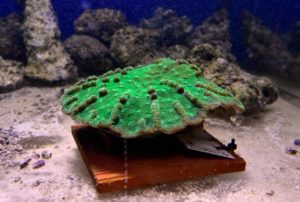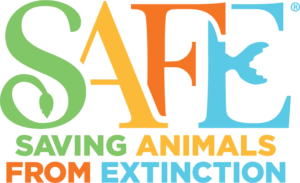Florida Reef Tract Rescue Project
Butterfly Pavilion houses corals for the Florida Reef Tract Rescue Project to maintain genetic diversity necessary for wild coral restoration efforts
The Florida reef tract is a 360-mile stretch of coral reef ecosystems forming the third largest barrier reef in the world, and the only living barrier reef in North America. It is America’s barrier reef. Barrier reefs serve important ecological functions as nurseries for fish and storm barriers for coastal habitats. Coral reefs are delicately balanced and when the corals themselves die the consequences are often huge. Like a rainforest without trees, the other animals are forced to move on now that they are unable to support themselves in the barren landscape of coral skeletons.

In 2014, the northernmost tip of the Florida reef tract located off the coast of Port St. Lucie, FL, experienced a small outbreak of a new and unknown disease. This disease, now called Stony Coral Tissue Loss Disease (SCTLD), was quick to spread throughout the different coral species along the reef. As it spread it was found that once a coral was infected it had almost a 100% chance of dying. Global issues like climate change, pollution, and other factors take a heavy toll, weakening habitats and making corals more susceptible to infection. In four years the SCTLD disease has spread over a 100 miles southward, impacting over 20 different species of reef building corals and reducing their abundance by 50-90%.
In response to the disease crisis, multiple government agencies came together to form the Florida Coral Rescue Team. This team went on to develop a revolutionary Coral Rescue Plan. The plan required the removal of healthy coral specimen, lovingly dubbed ‘reef-ugees’, of the most susceptible species from places still untouched by the disease and placing them in land-based ‘arks’. The goal was to save as many ‘reef-ugees’ as possible to ensure these species wouldn’t be brought to the brink of extinction.
In 2018, the Association of Zoos and Aquariums (AZA) was invited to support this rescue operation. Of the 236 zoos and aquariums accredited by AZA, only 22 facilities have been accepted as coral holders. Butterfly Pavilion, having the necessary invertebrate expertise, is one of those facilities accepted as a holder for the project.
In early 2019, Butterfly Pavilion committed to having a system ready to receive coral by early 2020. Since then, we have created an exhibit capable of supporting these essential animals. As the only facility in Colorado currently committed to holding coral, we are excited to house these ‘reef-uges’ at our facility and tell their story to our guests and members!




